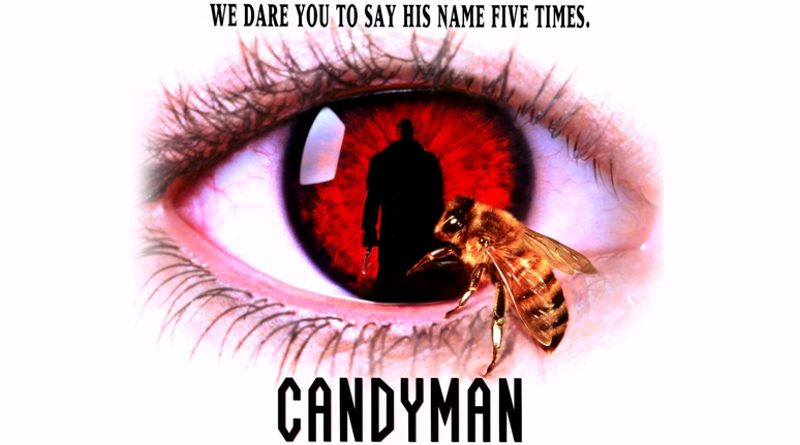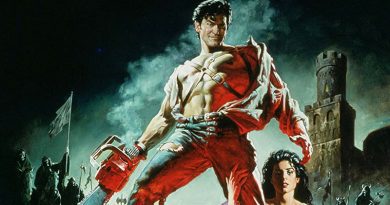Candyman at 30: The Elevated Horror Classic of the ’90s
In 2022’s Scream, there’s a sinister phone-call opening scene where Ghostface is curious about Tara Carpenter (Jenna Ortega) mentioning the words “elevated horror”. And she elaborates:
“You know, it’s like scary, but with complex emotional and thematic underpinnings. It’s not just some schlocky, cheeseball nonsense with wall-to-wall jump scares.“
The term “elevated horror” was populated during the early 2010s with the likes of The Babadook (2014), It Follows (2014), The Witch (2015) and Hereditary (2018) being some of the notable movies. But the truth is, elevated horror has actually been around longer than that, stretching way back to the 1920s when black-and-white horror classics like The Cabinet of Dr Caligari (1920) and Nosferatu (1922) were released back in the day. But the aforementioned term wasn’t known as such before the 2010s era since it was commonly referred to as “arthouse horror” instead.
Which brings me to Candyman, one of the best arthouse/elevated horror films ever made in the ’90s and it has been 30 years since its initial theatrical run on October 16, 1992. I remember when I first watched the movie on VHS and I didn’t really like it at first. Mainly because I was expecting a gory slasher film or something like Hellraiser since both Candyman and the latter shared the same creator written by Clive Barker. But despite the imposing figure of a sinister-looking titular antagonist who brutally slays his victims with a hook attached to the bloody stump of his hand, he’s no Michael Myers or Freddy Krueger.
In other words, Candyman is not your average slasher villain but more of a tragic figure. Even his backstory is rooted in a mix of grounded realism and urban legend. For the former, we learn that he was born in the 1800s as the son of a slave named Daniel Robitaille. He grew up as a successful painter in the late 19th century but his life was short-lived after his forbidden interracial relationship with a white woman caused his life. He died mercilessly at the hands of an angry mob, where they cut off his right hand before letting the bees sting his honeycomb-smeared body to death and burned his corpse.
Candyman has since become a mythical supernatural being. He only appears whenever someone is daring enough to summon him by saying his name “Candyman” five times in front of a mirror. Candyman, in turn, would kill the person with a hook in his hand.
I admit it took me a couple of revisits of Candyman over the years since its original release and I appreciated the movie more ever since. Tony Todd certainly owns the titular role that it’s hard to imagine anyone else playing Candyman. His signature deep voice is one for the ages, making his performance all the more morbidly haunting and even seductive.
The casting of Tony Todd as Candyman is also a novelty factor that sets his horror character apart from the rest. Not only Todd became the first black actor to play such a role (the character was originally written as a pale-skinned white male in Clive Barker’s short story The Forbidden) that is traditionally reserved for white people, as evidently seen in Michael Myers to Freddy Krueger and Jason Voorhees, but also helps his appearance more historically resonant with some of the provocative themes depicted in this movie. Themes like racial tension, social class as well as inequalities and injustice are subtly incorporated into the movie.
Writer-director Bernard Rose even goes as far as setting his movie in Chicago or more specifically, the Cabrini-Green housing project. It was the same ground where Candyman was burned before the Cabrini-Green was even built at the time. Interestingly enough, Cabrini-Green isn’t a fictional setting but a real housing project that happens among the most crime-infested living places in the city. It even gained notoriety for the real-life murder of 52-year-old Ruth Mae McCoy in 1987. She was shot multiple times when the killer sneaked into her 11th-floor Abbott apartment through her bathroom cabinet. The police found her body lying on her bedroom floor in a pool of blood.
The aforementioned murder case is integrated into the movie except for the victim’s name has changed to Ruthie Jean, where graduate students Helen (Virginia Madsen) and Bernadette (Kasi Lemmons) are doing research for their thesis. No doubt the change of location from the Liverpool housing estate in Clive Barker’s short story to Chicago’s Cabrini-Green as well as the murder case added a vivid sense of realism. This, in turn, helps to make the urban legend surrounding the supernatural existence of Candyman more palpable in terms of generating genuine fear and anxiety.
The movie also doesn’t forget to inject blood and gore into the movie. The kind that is graphic and brutal but not to the point of gratuitous or over-the-top. Then, there’s the bee scene, which was amazingly done in a practical way using actual live bees (over 200,000 of them!). At one point, we even witnessed a squirm-inducing moment, where the bees came out of Tony Todd’s mouth (he reportedly wore a mouthpiece) and onto Virginia Madsen’s face — an impressive feat even by today’s standard.
Let’s not forget about the gothic romance surrounding Candyman and Helen, where Helen is seen as a reincarnation of his long-lost love a century ago and the fact that she also shared an uncanny resemblance. Here, the love story is beautifully done and more so with Virginia Madsen’s hypnotic turn as Helen. It’s hard not to be mesmerised by her ethereal beauty, coupled with her strong and independent character that is far from the stereotypical damsel-in-distress type commonly seen in many horror movies. This is undoubtedly her most memorable performance to date apart from the otherwise messy Highlander II: The Quickening (1991), where she appeared as Connor MacLeod’s (Christopher Lambert) love interest.
Tony Todd and Virginia Madsen aren’t the only cast worth mentioning here as the movie equally benefits from above-average supporting roles including Kasi Lemmons and Xander Berkeley, who plays Helen’s cheating husband. Candyman is also notable for Philip Glass’ elegant and haunting score that perfectly complements the overall tone of the movie.
Candyman subsequently spawned two sequels, albeit standalone that include Candyman: Farewell to the Flesh in 1995 and Candyman: Day of the Dead in 1999. It wasn’t until 2021 that Candyman finally has a direct sequel in the form of, well, Candyman too.




